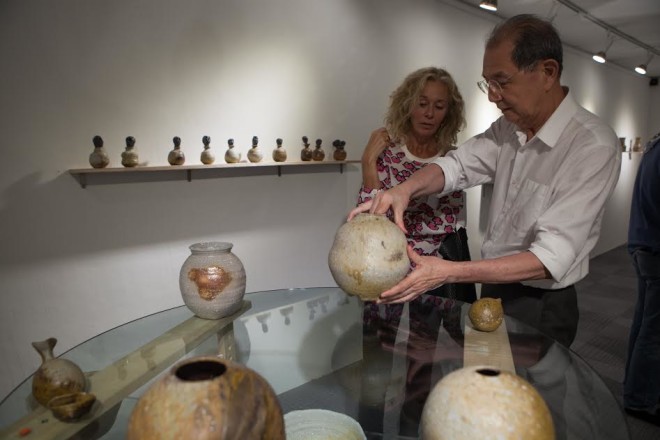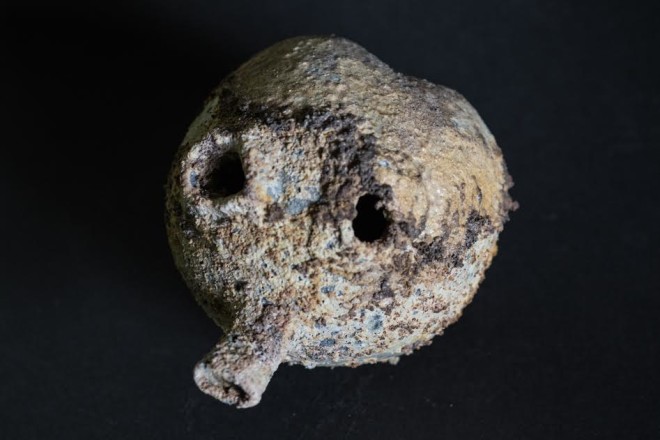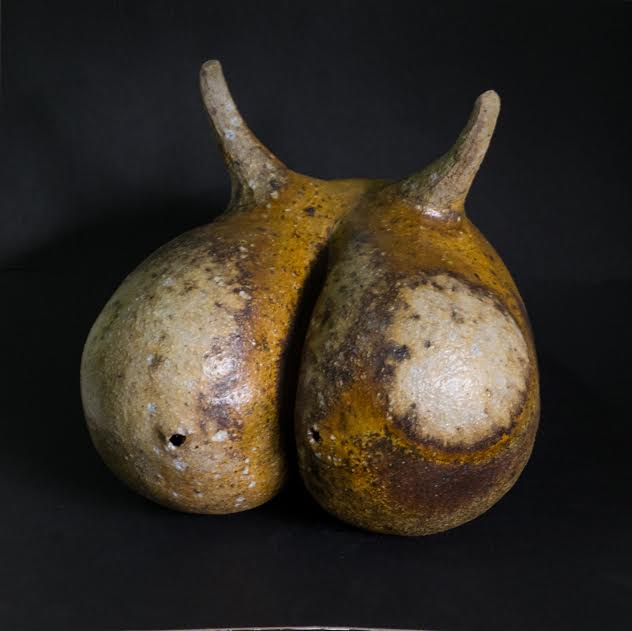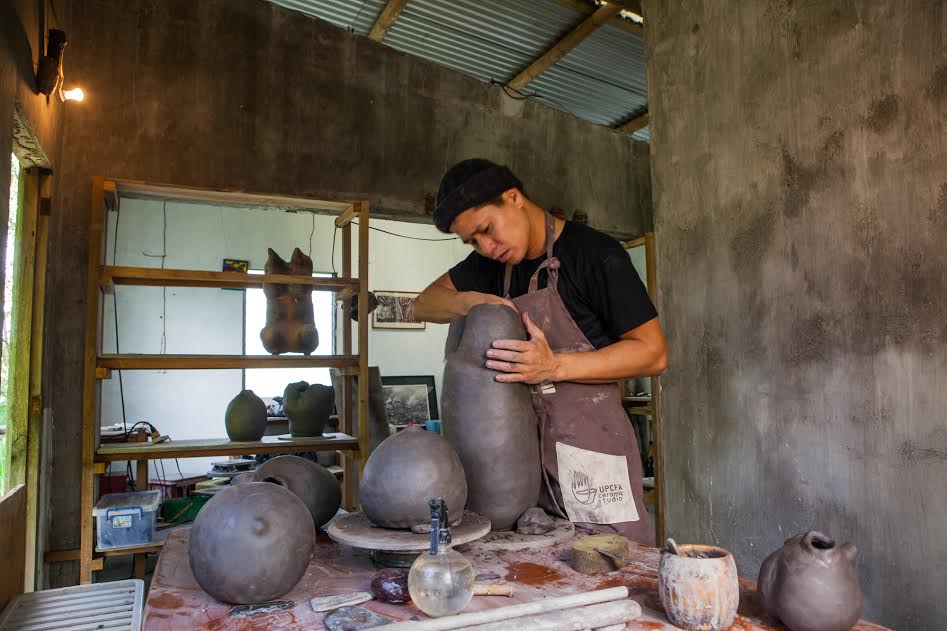
“Firing is like surfing. If you are afraid to fail or get hurt you will never be one with nature. Once you live in nature then you realize all the chaos can be transformed into something magical, something so addictive.”
This is what Filipino potter Pablo Capati III had to say about firing a kiln, explaining it is like riding a wave of fire. In likeness to surfing, both are unpredictable, dangerous, exciting and gives one a rush that leaves you wanting more.
In “Interplay,” Capati mounts a solo exhibition at One East Asia Gallery in Singapore, where he will showcase a collection of wood-fired pots from his kiln Momochan. This body of work will show his competence in the wood firing process, as he has logged over 100 firings and 5,000 hours of stoking the kiln he has experimented with since the year 2000.

Capati built his first anagama kiln in 2000 after being inspired by a pot that his parents brought back to the Philippines from Japan. Realizing that the process is so primitive he decided to build a kiln on his own and learn how to fire through experimentation. He built a kiln on the side of a hill at his Batangas studio and fired over 15 times before consulting local potters Jon Pettyjohn, Tessy Pettyjohn and the author.
After the consultation he was finally able to reach temperature for the first time. After achieving “successful” results, the kiln collapsed during the next firing as bricks tumbled and melted into kiln shelves and posts fused together with the pots.

After this major setback he consulted master potters Jon Pettyjohn, Shozo Michikawa, Yasuo Terada and Steve Harrison before rebuilding Momochan. After many failures and thousands of stokes into the wee hours of the night, Pablo was finally satisfied with the results of his firing in 2012. He has achieved a rich brown reduced body with layers of ash creating texture and hues of blues, browns, oranges and yellows.

Capati also works with others and fires alongside potters in order to share experiences and gain knowledge of different firing styles. He has fired kilns in the Philippines, Japan and China ranging in variations such as the anagama, shigaraki anagama, sasama anagama and naborigama.

He has also taken lead in building mini anagama kilns at Flicam museums in China and at Khon Kaen University in Thailand. In the Philippines, he has built wood kilns in Sagada, Batangas and Dumaguete. Since first visiting Pablo’s first kiln in 2000, I have watched his pots evolve as he has controlled the fire and its direction within the kiln. His shapes remain simple with beautiful curves as the textures and colors on the surface have evolved through time and experimentation. To control nature is an awesome thing and an endless endeavor for Pablo Capati III. —CONTRIBUTED
“Interplay” runs at One East Asia Gallery in Singapore until Dec. 30.













































